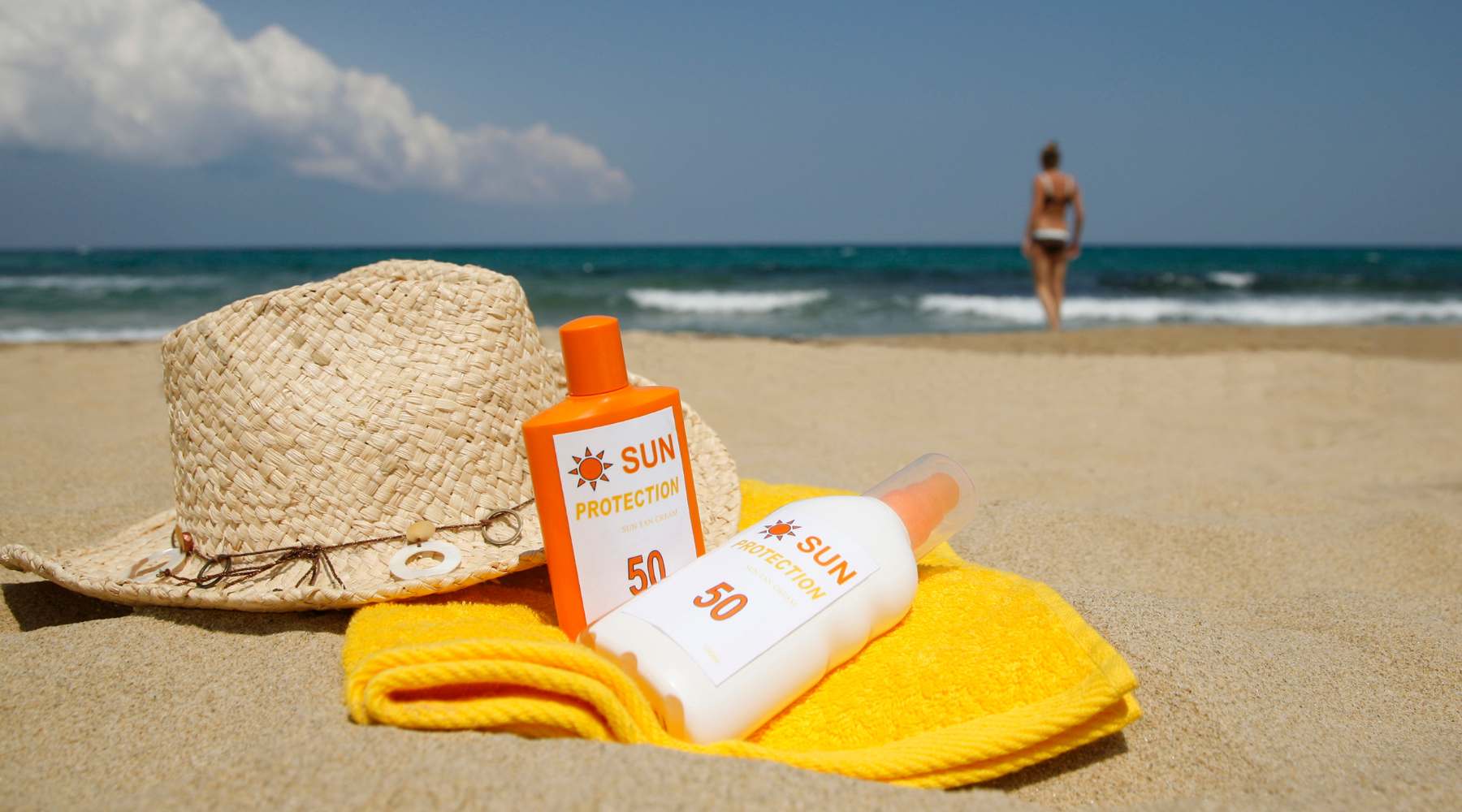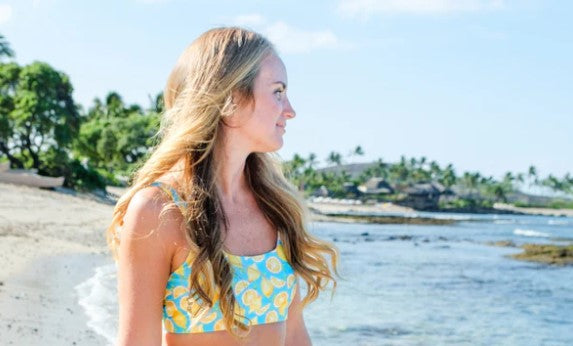
10 smart sun protection tips
The active, outdoor lifestyle is so good for you—as long as you protect yourself from sun damage. Excessive UV exposure brings sunburn, sun poisoning, and even skin cancer. Here’s how to enjoy your sun-drenched adventures safely.
Quick links:
Seek shade during peak sun hours
With these precautions, you’ll have many happy hours of fun and skip the skin damage.
Tip 1: use SPF 30+ sunscreen
To protect your skin from harmful ultraviolet rays, always wear a broad-spectrum sunscreen with a sun protection factor (SPF) of at least 30. This protects against both UVA and UVB radiation, which cause sunburn, sun poisoning, premature aging, and increase your risk of skin cancer.
Apply sunscreen generously to all exposed areas of skin, including your face, neck, ears, and hands. Remember to reapply every 2 hours, or more frequently if you're swimming or sweating heavily.
Here are the three categories of sunscreen available:
- Mineral sunscreens contain zinc oxide or titanium dioxide, which create a film over the skin to block UV rays. These sunscreens are often recommended for people with sensitive skin, as they are less likely to cause irritation. They also offer broad-spectrum protection against both UVA and UVB rays.
- Chemical sunscreens contain organic compounds, such as oxybenzone, avobenzone, and octinoxate, which absorb UV rays and convert them into heat that is then released from the skin. Chemical sunscreens are often easier to apply and less likely to leave a white cast on the skin, the way mineral sunscreens do.
No sunscreen provide 100% protection against UV radiation. Always combine sunscreen with other sun protection measures for the best results.
Tip 2: wear sun-protective clothing
Sun-protective clothing shields your skin from harmful UV rays. Choose clothing that covers most of your skin, such as long-sleeved shirts, long pants, and skirts. Darker colors and tightly woven fabrics provide better protection than lighter colors and loosely woven materials.
Many clothing brands now offer ultraviolet protection factor (UPF) ratings, which indicate how much UV radiation can penetrate the fabric. Look for clothing with a UPF of at least 30 for good protection. You can also find specialized sun-protective clothing that is lightweight, breathable and keeps you cool in warm weather.
SwimZip offers high-quality sun-protective swimwear for the whole family. Our swimsuits, rash guards, and accessories are made with a special fabric that blocks 98% of UV rays.
Our chlorine-resistant fabric maintains UV protection and color after repeated use and washing. Our designs are functional and stylish, with many colors and patterns to choose from.
Our swimwear is perfect for beach days, pool parties, and any outdoor activity where sun protection is essential.
Tip 3: use SPF lip balm
The skin on your lips is thin and delicate, and it contains very little melanin (the pigment that helps protect skin from ultraviolet rays). This makes your lips particularly vulnerable to sun damage.
Without proper protection, your lips can easily become sunburned, dry, and chapped. This increases your risk of developing precancerous or cancerous lesions.
To protect your lips, use a lip balm with an SPF of at least 15. Many lip balms now contain SPF 30 or higher, which provides even better protection against harmful UV rays. Look for a broad-spectrum lip balm that shields against both UVA and UVB radiation.
Consider the following factors when you choose an SPF lip balm:
- Ingredients. In addition to SPF, look for lip balms with moisturizing ingredients such as shea butter, coconut oil, or vitamin E to keep your lips hydrated and smooth.
- Texture. Choose a lip balm with a texture you enjoy wearing. Some lip balms have a thicker, waxier consistency, while others are lighter and more glossy.
Reapply SPF lip balm every 2 hours, or more often if you swim, eat, or drink. Even if you wear lipstick or lip gloss, apply an SPF lip balm underneath for adequate sun protection.
Tip 4: wear UV-blocking sunglasses
Your eyes are also susceptible to sun damage, and exposure to UV rays can lead to many eye problems, including cataracts, photokeratitis (sunburn of the cornea), and pterygium (abnormal tissue growth on the eye). To protect your eyes from UV rays, invest in a pair of high-quality sunglasses with UV protection.
Our sunglasses collection offers stylish, functional designs that everyone will love wearing. The lenses provide 100% UVA and UVB protection, ensuring your eyes stay safe during outdoor adventures.
Tip 5: seek shade during peak sun hours
The sun's UV rays are strongest between 10 a.m. and 4 p.m. During these peak sun hours, seek shade to minimize your UV exposure and reduce the risk of sun damage to your skin and eyes.
When you plan outdoor activities, consider the following strategies to stay shielded from direct sunlight:
- Take advantage of natural shade from trees, large rocks, or cliffs, especially during midday when the sun is directly overhead.
- If natural shade is unavailable, create your own using umbrellas, beach tents, or canopies. These portable shade structures are perfect for picnics, beach days, or outdoor events.
- Plan outdoor activities for the early morning or late afternoon when the sun's rays are less intense. This is particularly important during hot weather to reduce the risk of heat stroke and other heat-related illnesses.
- If you must be outdoors during peak sun hours, take frequent breaks in a shady spot to cool down and limit your UV exposure.
Tip 6: check the UV Index
The UV Index is a scale that measures the intensity of the sun's ultraviolet radiation. It ranges from 1 (low) to 11+ (extreme), and the higher the number, the greater the risk of sun damage to your skin and eyes. Check the UV Index before you go outside to plan appropriate sun protection measures.
Here's what you need to know about the UV Index:
- Low (1-2): the risk of sunburn and skin damage is minimal. You can safely enjoy outdoor activities without extra precautions.
- Moderate (3-5): there is a moderate risk of sunburn and skin damage. Wear protective clothing, apply SPF 30+ sunscreen, and seek shade during peak sun hours.
- High (6-7): the risk of sunburn and skin damage is high. Wear protective clothing, apply SPF 30+ sunscreen, seek shade, and wear UV-blocking sunglasses.
- Very High (8-10): there is a very high risk of sunburn and skin damage. Minimize sun exposure between 10 a.m. and 4 p.m., wear protective clothing, apply SPF 30+ sunscreen, seek shade, and wear UV-blocking sunglasses.
- Extreme (11+): the risk of sunburn and skin damage is extreme. Avoid sun exposure between 10 a.m. and 4 p.m., wear protective clothing, apply SPF 30+ sunscreen, seek shade, and wear UV-blocking sunglasses.
Tip 7: put on a wide-brimmed hat
Wide-brimmed hats shade your face, ears, and neck from harmful UV rays. This reduces sunburn risk, premature skin aging, and skin cancer. Our wide-brimmed hats feature a 4-inch brim that provides exceptional coverage and an adjustable chin strap for a secure fit, even on breezy days.
Tip 8: stay hydrated
Proper hydration helps regulate your body temperature, prevents heat-related illnesses, and maintains your overall health when you spend time outdoors, especially during hot weather or while engaging in physical activities.
Sip water consistently throughout the day, even if you don't feel thirsty. Thirst is often a sign that you are already mildly dehydrated. When you head outdoors, bring more water than you think you'll need.
Eat plenty of water-rich fruits and vegetables, such as watermelon, cucumber, and leafy greens, to help you stay hydrated. Limit your intake of alcohol, caffeine, and sugary drinks, as they can contribute to dehydration. Clear or light yellow urine indicates adequate hydration, while dark yellow or amber-colored urine suggests dehydration.
If you experience symptoms of dehydration or heat-related illness, such as dizziness, headache, or muscle cramps, move to a shady spot, drink water, and take a cool shower or apply cool compresses to your skin. Severe cases may require medical attention.
Tip 9: avoid tanning beds and sunlamps
Tanning beds and sunlamps emit high levels of UV rays, which can cause skin damage, accelerate skin aging, and significantly increase your risk of skin cancer, including melanoma, the deadliest type of skin cancer.
The World Health Organization has classified UV radiation from tanning beds as a Group 1 carcinogen, the same category as tobacco and asbestos.
For a safer alternative, try self-tanning products or bronzers to achieve a sun-kissed look without the health risks of tanning beds.
Tip 10: examine your skin regularly
Follow these steps to perform a thorough self-examination:
- Use a full-length mirror and a hand mirror to check hard-to-see areas.
- Look for the ABCDE signs of melanoma:
- Asymmetry
- Border irregularity
- Color variation
- Diameter larger than 6mm
- Evolution (changes in size, shape, or color)
- Check your entire body, including often-overlooked areas such as the scalp, ears, and feet.
- If you notice any concerning changes or new growths, schedule an appointment with a dermatologist for a professional evaluation.
Sun safety tips FAQ
What is the safest time to be in the sun?
The safest time to be in the sun is early morning before 10 a.m. and late afternoon after 4 p.m. when the sun's rays are less intense. During these periods of time, the UV rays are not as strong. This reduces the risk of sunburn and skin damage.
What colors can block out UV rays?
Dark or bright colors (black, navy blue, and red) block more UV rays than lighter colors. These colors absorb more UV radiation and provide a higher level of protection against the sun's harmful rays when spending time outdoors.
What vitamin is the best for sun protection?
Vitamin D is often called the "sunshine vitamin" because it is produced in the skin through exposure to UVB rays from the sun. Vitamin D itself does not provide sun protection. Antioxidants such as vitamins C and E may help protect skin cells from UV damage.
Why shouldn’t you wear sunscreen every day?
There is no good reason to avoid wearing sunscreen every day. Dermatologists recommend applying a broad-spectrum sunscreen with SPF 30 or higher daily, even on cloudy days, to protect against UV damage.
What is the best material to block out the sun?
Tightly woven fabrics such as denim, wool, and synthetic fibers provide better UV protection than loosely woven fabrics like linen or cotton.
At what age does sun damage start to show?
Sun damage can start showing on the skin as early as your 20s and 30s in the form of freckles, age spots, wrinkles, and discoloration. Most visible signs of sun damage such as leathery skin and precancerous growths typically appear later in life after decades of exposure to ultraviolet rays.





Leave a comment
This site is protected by hCaptcha and the hCaptcha Privacy Policy and Terms of Service apply.